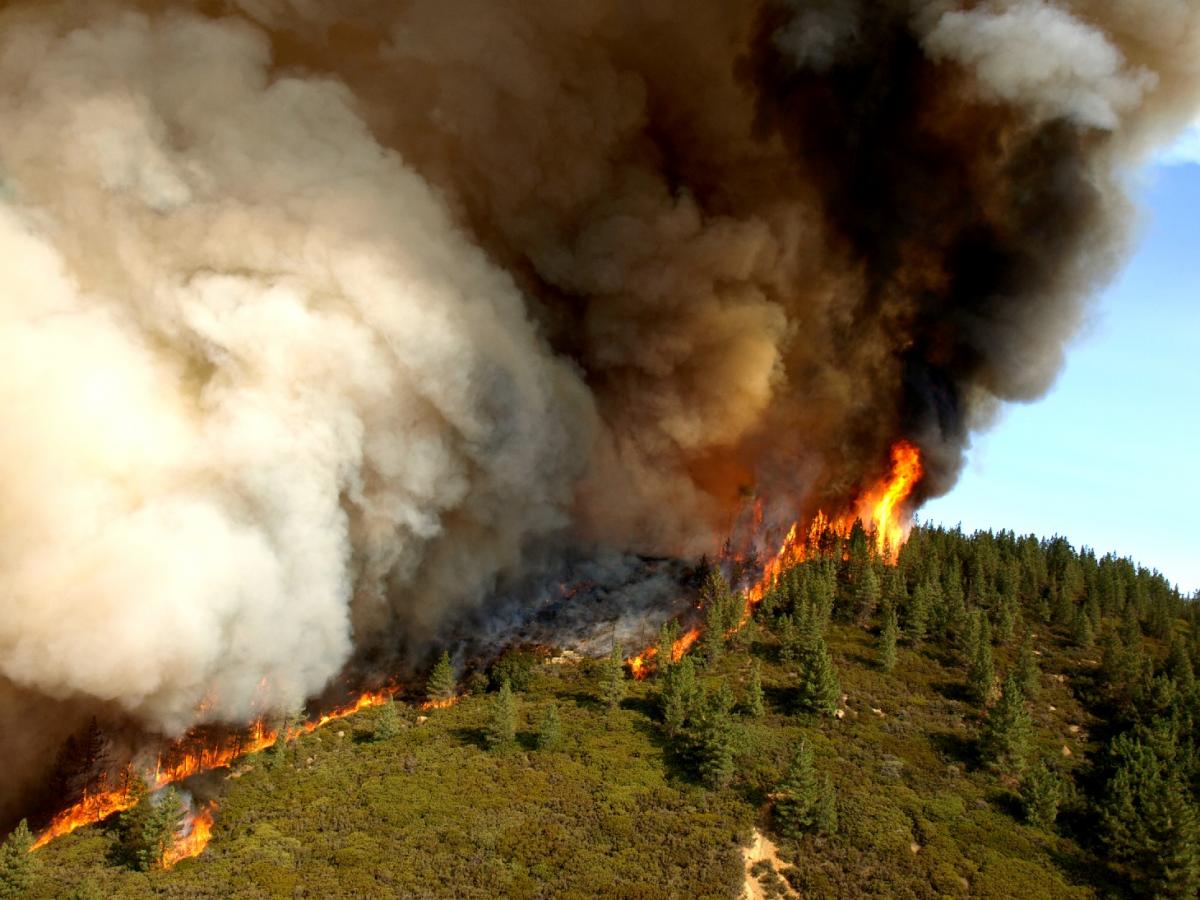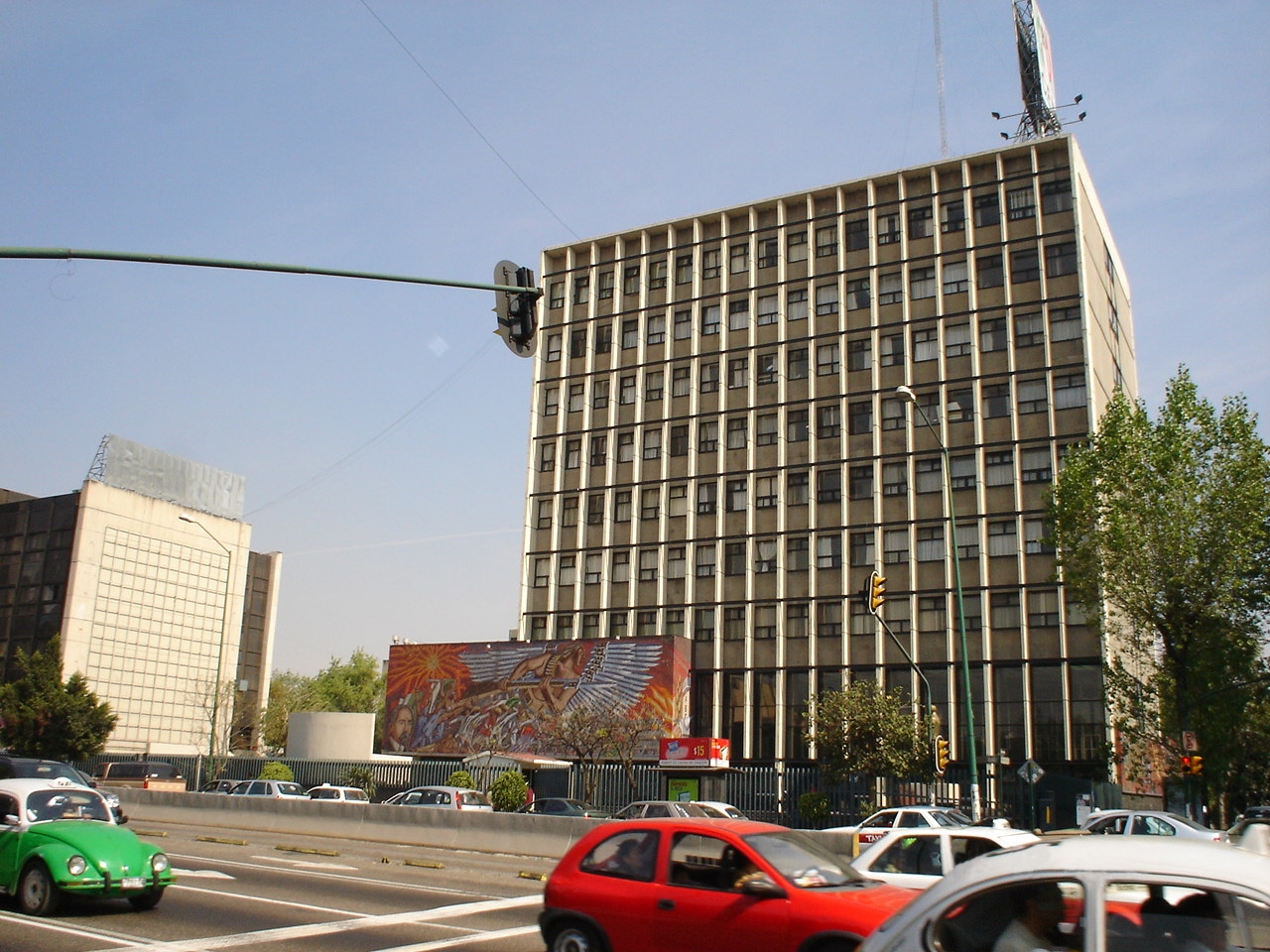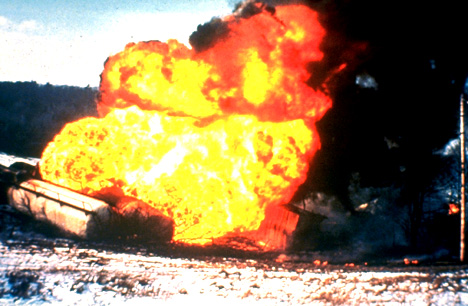|
San Juanico Disaster
The San Juan Ixhuatepec explosions of 1984, also known as the San Juanico disaster, was an industrial disaster caused by a series of explosions at a liquefied petroleum gas (LPG) tank farm in San Juan Ixhuatepec, Tlalnepantla de Baz, State of Mexico on 19 November 1984. The explosions destroyed the facility and devastated the town of San Juan Ixhuatepec, part of Greater Mexico City, with 500–600 victims killed, and 5000–7000 suffering severe burns. The disaster was one of the deadliest industrial disasters in world history. Facility The incident took place at a storage and distribution facility (a "terminal") for liquified petroleum gas (LPG) belonging to the state-owned oil company Pemex. The facility consisted of 54 LPG storage tanks; 6 large spherical tanks (four holding and two holding ) and 48 smaller horizontal bullet-shaped tanks of various sizes. Together, the tanks contained of a propane/butane mixture at the time of the accident, representing one third of ... [...More Info...] [...Related Items...] OR: [Wikipedia] [Google] [Baidu] |
Conflagration
A conflagration is a large fire. Conflagrations often damage human life, animal life, health, and/or property. A conflagration can begin accidentally, be naturally caused (wildfire), or intentionally created (arson). A very large fire can produce a firestorm, in which the central column of rising heated air induces strong inward winds, which supply oxygen to the fire. Conflagrations can cause casualties including deaths or injuries from burns, trauma due to collapse of structures and attempts to escape, and smoke inhalation. Firefighting is the practice of extinguishing a conflagration, protecting life and property and minimizing damage and injury. One of the goals of fire prevention is to avoid conflagrations. When a conflagration is extinguished, there is often a fire investigation to determine the cause of the fire. Causes and types During a conflagration a significant movement of air and combustion products occurs. Hot gaseous products of combustion move upward, c ... [...More Info...] [...Related Items...] OR: [Wikipedia] [Google] [Baidu] |
Explosions In 1984
An explosion is a rapid expansion in volume associated with an extreme outward release of energy, usually with the generation of high temperatures and release of high-pressure gases. Supersonic explosions created by high explosives are known as detonations and travel through shock waves. Subsonic explosions are created by low explosives through a slower combustion process known as deflagration. Causes Explosions can occur in nature due to a large influx of energy. Most natural explosions arise from volcanic or stellar processes of various sorts. Explosive volcanic eruptions occur when magma rises from below, it has very dissolved gas in it. The reduction of pressure as the magma rises and causes the gas to bubble out of solution, resulting in a rapid increase in volume. Explosions also occur as a result of impact events and in phenomena such as hydrothermal explosions (also due to volcanic processes). Explosions can also occur outside of Earth in the universe in events ... [...More Info...] [...Related Items...] OR: [Wikipedia] [Google] [Baidu] |
1984 In Mexico
Events in the year 1984 in Mexico. Incumbents Federal government * President: Miguel de la Madrid * Interior Secretary (SEGOB): Manuel Bartlett Díaz * Secretary of Foreign Affairs (SRE): Bernardo Sepúlveda Amor * Communications Secretary (SCT): Rodolfo Félix Valdés/ Daniel Díaz Díaz * Education Secretary (SEP): Manuel Bartlett * Secretary of Defense (SEDENA): Juan Arévalo Gardoqui * Secretary of Navy: Miguel Ángel Gómez Ortega * Secretary of Labor and Social Welfare: Arsenio Farell Cubillas * Secretary of Welfare: Guillermo Carrillo Arena * Secretary of Public Education: Jesús Reyes Heroles * Tourism Secretary (SECTUR): Carlos Hank González * Secretary of the Environment (SEMARNAT): Pedro Ojeda Paullada * Secretary of Health (SALUD): Guillermo Soberón Acevedo Supreme Court * President of the Supreme Court: Jorge Iñárritu y Ramírez de Aguilar Governors * Aguascalientes: Rodolfo Landeros Gallegos * Baja California: Xicoténcatl Leyva Mor ... [...More Info...] [...Related Items...] OR: [Wikipedia] [Google] [Baidu] |
Gas Explosions
A gas explosion is an explosion resulting from mixing a gas, typically from a gas leak, with air in the presence of an ignition source. In household accidents, the principal explosive gases are those used for heating or cooking purposes such as natural gas, methane, propane, butane. In industrial explosions many other gases, like hydrogen, as well as evaporated (gaseous) gasoline (American English)/petrol (British English) or ethanol play an important role. Industrial gas explosions can be prevented with the use of intrinsic safety barriers to prevent ignition. Lower and upper explosive limits Whether a mixture of air and gas is combustible depends on the air-to-fuel ratio. For each fuel, ignition occurs only within a certain range of concentration, known as the upper and lower flammability limits. For example, for methane and gasoline vapor, this range is 5-15% and 1.4-7.6% gas to air, respectively. An explosion can only occur when fuel concentration is within these limits. ... [...More Info...] [...Related Items...] OR: [Wikipedia] [Google] [Baidu] |
Industrial Fires And Explosions In Mexico
Industrial may refer to: Industry * Industrial archaeology, the study of the history of the industry * Industrial engineering, engineering dealing with the optimization of complex industrial processes or systems * Industrial city, a city dominated by one or more industries * Industrial loan company, a financial institution in the United States that lends money, and may be owned by non-financial institutions * Industrial organization, a field that builds on the theory of the firm by examining the structure and boundaries between firms and markets * Industrial Revolution, the development of industry in the 18th and 19th centuries * Industrial society, a society that has undergone industrialization * Industrial technology, a broad field that includes designing, building, optimizing, managing and operating industrial equipment, and predesignated as acceptable for industrial uses, like factories * Industrial video, a video that targets “industry” as its primary audience * Industri ... [...More Info...] [...Related Items...] OR: [Wikipedia] [Google] [Baidu] |
Health And Safety Executive
The Health and Safety Executive (HSE) is a UK government agency responsible for the encouragement, regulation and enforcement of workplace health, safety and welfare, and for research into occupational risks in Great Britain. It is a non-departmental public body of the United Kingdom with its headquarters in Bootle, England. In Northern Ireland, these duties lie with the Health and Safety Executive for Northern Ireland. The HSE was created by the Health and Safety at Work etc. Act 1974, and has since absorbed earlier regulatory bodies such as the Factory Inspectorate and the Railway Inspectorate though the Railway Inspectorate was transferred to the Office of Rail and Road in April 2006. The HSE is sponsored by the Department for Work and Pensions. As part of its work, HSE investigates industrial accidents, small and large, including major incidents such as the explosion and fire at Buncefield in 2005. Though it formerly reported to the Health and Safety Commission, on 1 Apr ... [...More Info...] [...Related Items...] OR: [Wikipedia] [Google] [Baidu] |
1985 Mexico City Earthquake
The 1985 Mexico City earthquake struck in the early morning of 19 September at 07:17:50 (CST) with a moment magnitude of 8.0 and a maximal Mercalli intensity of IX (''Violent''). The event caused serious damage to the Greater Mexico City area and the deaths of at least 5,000 people. The sequence of events included a foreshock of magnitude 5.2 that occurred the prior May, the main shock on 19 September, and two large aftershocks. The first of these occurred on 20 September with a magnitude of 7.5 and the second occurred seven months later on 30 April 1986 with a magnitude of 7.0. They were located off the coast along the Middle America Trench, more than away, but the city suffered major damage due to its large magnitude and the ancient lake bed that Mexico City sits on. The event caused between three and five billion USD in damage as 412 buildings collapsed and another 3,124 were seriously damaged in the city. Then-president Miguel de la Madrid and the ruling Institutional Re ... [...More Info...] [...Related Items...] OR: [Wikipedia] [Google] [Baidu] |
Institutional Revolutionary Party
The Institutional Revolutionary Party ( es, Partido Revolucionario Institucional, ; abbr. PRI) is a political party in Mexico that was founded in 1929 and held uninterrupted power in the country for 71 years, from 1929 to 2000, first as the National Revolutionary Party ( es, Partido Nacional Revolucionario, PNR), then as the Party of the Mexican Revolution ( es, Partido de la Revolución Mexicana, PRM) and finally as the PRI beginning in 1946. The PNR was founded in 1929 by Plutarco Elías Calles, Mexico's paramount leader at the time and self-proclaimed (Supreme Chief) of the Mexican Revolution. The party was created with the intent of providing a political space in which all the surviving leaders and combatants of the Mexican Revolution could participate and to solve the severe political crisis caused by the assassination of President-elect Álvaro Obregón in 1928. Although Calles himself fell into political disgrace and was exiled in 1936, the party continued ruling Mexico ... [...More Info...] [...Related Items...] OR: [Wikipedia] [Google] [Baidu] |
Boiling Liquid Expanding Vapor Explosion
A boiling liquid expanding vapor explosion (BLEVE, ) is an explosion caused by the rupture of a vessel containing a pressurized liquid that has reached temperature above its boiling point. Because the boiling point of a liquid rises with pressure, the contents of the pressurized vessel can remain liquid as long as the vessel is intact. If the vessel's integrity is compromised, the loss of pressure and dropping boiling point can cause the liquid to rapidly convert to a gas and expand rapidly. If the gas is combustible, as is the case with hydrocarbons and alcohols, further damage can be caused by the ensuing fire. Mechanism There are three key elements causing a BLEVE: # A substance in liquid form at a temperature above its normal atmospheric pressure boiling point. # A containment vessel maintains the pressure that keeps the substance in liquid form. # A sudden loss of containment that rapidly drops the pressure. Typically, a BLEVE starts with a container of liqui ... [...More Info...] [...Related Items...] OR: [Wikipedia] [Google] [Baidu] |
BLEVE
A boiling liquid expanding vapor explosion (BLEVE, ) is an explosion caused by the rupture of a vessel containing a pressurized liquid that has reached temperature above its boiling point. Because the boiling point of a liquid rises with pressure, the contents of the pressurized vessel can remain liquid as long as the vessel is intact. If the vessel's integrity is compromised, the loss of pressure and dropping boiling point can cause the liquid to rapidly convert to a gas and expand rapidly. If the gas is combustible, as is the case with hydrocarbons and alcohols, further damage can be caused by the ensuing fire. Mechanism There are three key elements causing a BLEVE: # A substance in liquid form at a temperature above its normal atmospheric pressure boiling point. # A containment vessel maintains the pressure that keeps the substance in liquid form. # A sudden loss of containment that rapidly drops the pressure. Typically, a BLEVE starts with a container of liqui ... [...More Info...] [...Related Items...] OR: [Wikipedia] [Google] [Baidu] |
Leak
A leak is a way (usually an opening) for fluid to escape a container or fluid-containing system, such as a tank or a ship's hull, through which the contents of the container can escape or outside matter can enter the container. Leaks are usually unintended and therefore undesired. The word ''leak'' usually refers to a gradual loss; a sudden loss is usually called a ''spill''. The matter leaking in or out can be gas, liquid, a highly viscous paste, or even a solid such as a powdered or granular solid or other solid particles. Sometimes the word "''leak''" is used in a figurative sense. For example, in a news leak secret information becomes public. According to ASTM D7053-17, water leakage is the passage of (liquid) water through a material or system designed to prevent passage of water. Types and possible causes Types of leak openings include a puncture, gash, rust or other corrosion hole, very tiny ''pinhole leak'' (possibly in imperfect welds), crack or microcrack, or in ... [...More Info...] [...Related Items...] OR: [Wikipedia] [Google] [Baidu] |





